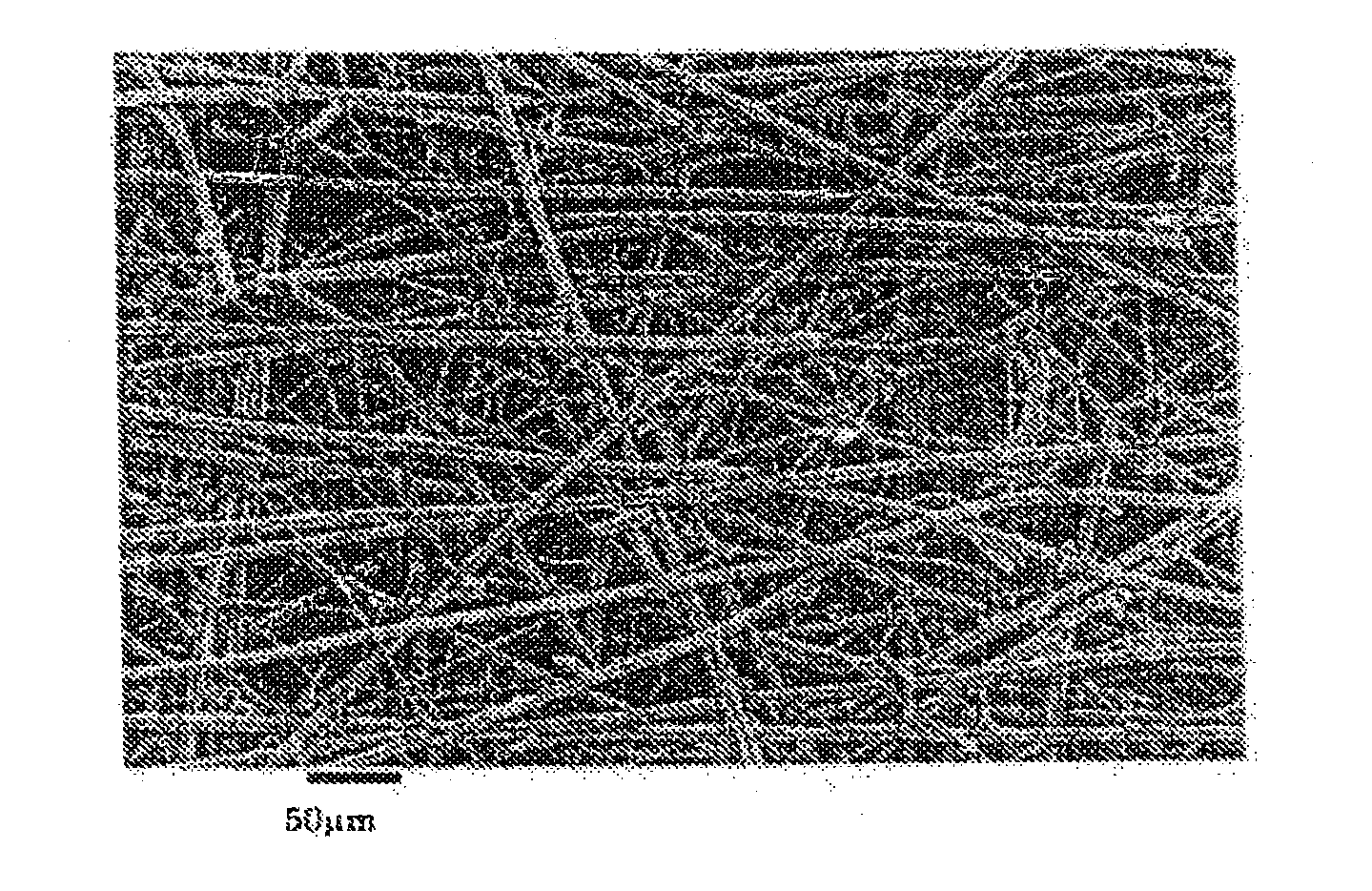Porous electrode substrate, method for producing the same, membrane electrode assembly, and polymer electrolyte fuel cell
a technology of electrode substrate and membrane electrode, which is applied in the direction of cell components, conductors, electrochemical generators, etc., can solve the problems of electrode substrate, high cost, complex production process, etc., and achieves the effects of small undulation, good handling, and small breakag
- Summary
- Abstract
- Description
- Claims
- Application Information
AI Technical Summary
Benefits of technology
Problems solved by technology
Method used
Image
Examples
example 1
[0048]As short carbon fibers (A), PAN-based carbon fibers having an average fiber diameter of 7 μm and an average fiber length of 3 mm were prepared. As short carbon fiber precursors (b) having an average diameter of 5 μm or lower, acrylic short fibers having an average fiber diameter of 4 μm and an average fiber length of 3 mm (trade name: D122, made by Mitsubishi Rayon Co., Ltd.) were prepared. Further as an organic polymer compound, polyvinyl alcohol (PVA) short fibers having an average fiber length of 3 mm (trade name: VBP105-1, made by Kuraray Co., Ltd.) were prepared.
[0049]At first, 100 parts of the short carbon fibers (A) were dispersed in water. When the short carbon fibers (A) were sufficiently and homogeneously dispersed, 83 parts of the acrylic short fibers and 53 parts of the PVA short fibers were added into the suspension and were homogeneously dispersed. Then, the dispersion liquid was manually spread in a planar shape to form a paper (having a length of 250 mm and hav...
examples 2 and 3
, and 11 to 13
[0052]Porous electrode substrates were obtained as in Example 1, except for setting the amounts of the acrylic short fibers and the PVA short fibers that were used and the basis weights of the precursor sheet at values shown in Table 1. The porous electrode substrates exhibited almost no in-plane shrinkage during carbonization treatment, exhibited good handleability and small undulation of 2 mm or less, and had good air permeability, thickness and through-plane electric resistance. The planarly dispersed short carbon fibers (A) were joined via mesh-like carbon fibers (B). The evaluation results are shown in Table 1.
example 14
[0053]A porous electrode substrate was obtained as in Example 1, except for setting the amounts of the acrylic short fibers and the PVA short fibers that were used and the basis weight of the precursor sheet at values shown in Table 1, and subjecting one sheet of the precursor sheet to hot pressure forming. The porous electrode substrate exhibited almost no in-plane shrinkage during carbonization treatment, exhibited good handleability and small undulation of 2 mm or less, and had good air permeability, thickness and through-plane electric resistance. The planarly dispersed short carbon fibers (A) were joined via mesh-like carbon fibers (B). The evaluation results are shown in Table 1.
PUM
| Property | Measurement | Unit |
|---|---|---|
| diameter | aaaaa | aaaaa |
| thickness | aaaaa | aaaaa |
| length | aaaaa | aaaaa |
Abstract
Description
Claims
Application Information
 Login to View More
Login to View More - R&D
- Intellectual Property
- Life Sciences
- Materials
- Tech Scout
- Unparalleled Data Quality
- Higher Quality Content
- 60% Fewer Hallucinations
Browse by: Latest US Patents, China's latest patents, Technical Efficacy Thesaurus, Application Domain, Technology Topic, Popular Technical Reports.
© 2025 PatSnap. All rights reserved.Legal|Privacy policy|Modern Slavery Act Transparency Statement|Sitemap|About US| Contact US: help@patsnap.com


